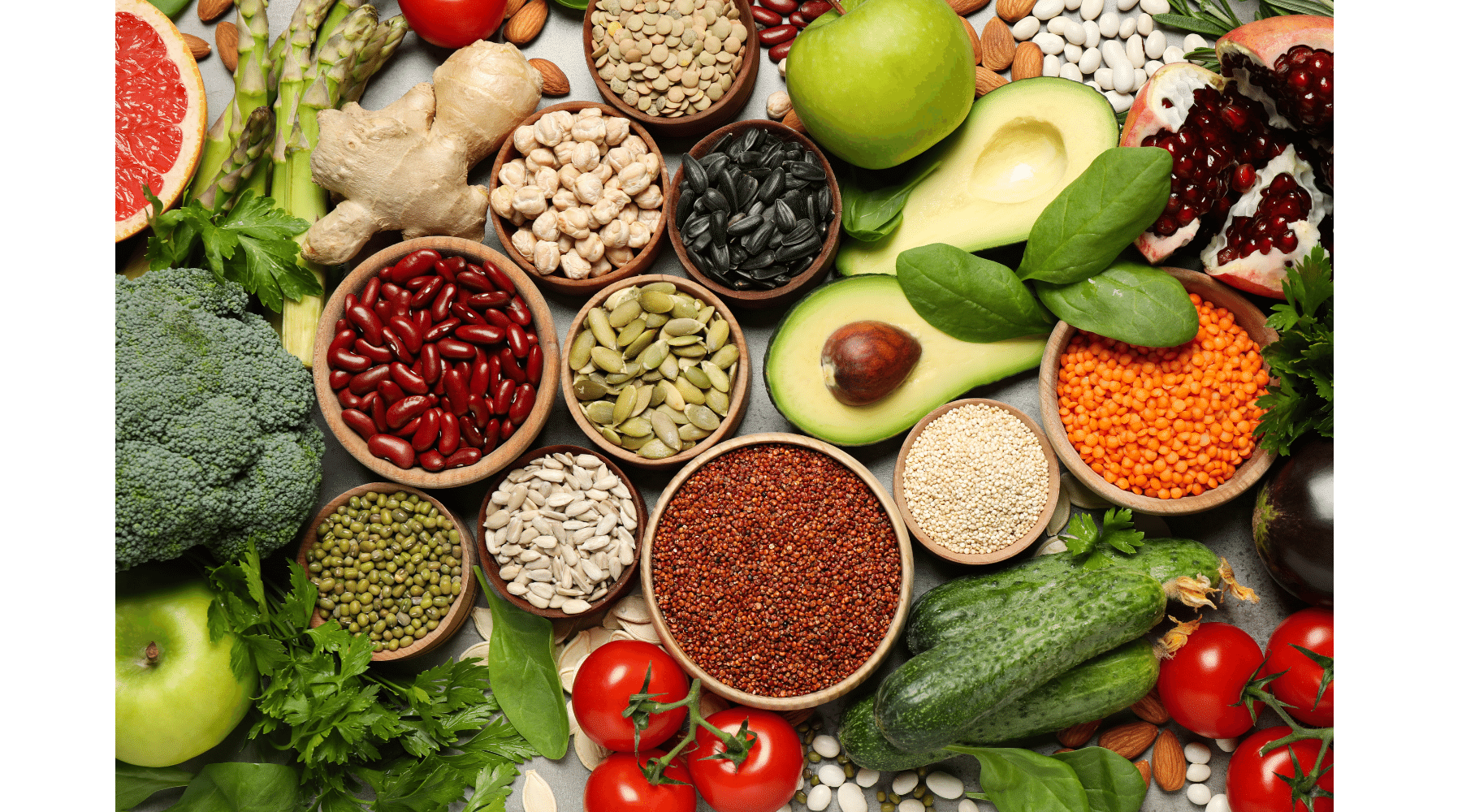
Flexibility is Key: A Comprehensive Guide to Fall and Winter Joint Health
This comprehensive guide aims to provide essential tips and techniques to keep your joints healthy during the fall and winter seasons. From arthritis to back pain, our community clinic understands the importance of joint health, and we have compiled a list of exercises, weight management, and support resources to help you get through the colder months. Whether it's keeping your bones strong or muscles flexible, this guide, supported by NIAMS news, will help you keep joint pain at bay and maintain overall health.
Flexibility is Key: A Comprehensive Guide to Fall and Winter Joint Health
Maintaining good joint health is essential, especially during the fall and winter seasons when the cold temperatures can cause stiffness, pain, and reduced mobility. Flexibility is key to keeping your joints healthy and working correctly. Joint health is vital as it affects your overall mobility and quality of life. Flexibility training is an effective way to improve joint health, as it increases your range of motion and reduces the risk of injury. There are different types of exercises that you can do to improve mobility and reduce pain in the joints. Stretching is one of the most effective techniques to enhance flexibility for improved joint functionality. Proper nutrition is also essential in maintaining good joint strength during the cold weather months. Eating a diet rich in vitamins, minerals, and antioxidants can help reduce inflammation and promote healthy joints. Additionally, taking care of your joints during the cold weather months involves wearing warm clothing, staying active, and avoiding prolonged periods of inactivity. By following these tips, you can keep your joints healthy, mobile, and pain-free throughout the fall and winter seasons. Remember, maintaining good joint health is crucial for optimum performance and a high quality of life.
What Is Joint Health?
Joint health refers to the proper functioning and maintenance of the joints in our body. Joints are the points where two or more bones meet, and they provide support and flexibility to our body. Healthy joints are essential for performing daily activities like walking, running, and even sitting. Poor joint health can lead to pain, stiffness, and decreased mobility, which can significantly affect our quality of life. As we age, joint health becomes even more critical because our joints tend to lose their flexibility and strength. Therefore, it is essential to take care of our joints by following a healthy lifestyle, exercising regularly, and consuming a balanced diet. In this comprehensive guide to fall and winter joint health, we will discuss the benefits of flexibility training, different types of exercises that improve joint mobility, stretching techniques, and nutrition tips that can help maintain good joint strength during the colder months. We will also provide additional tips on how to take care of your joints during the cold weather months.
Benefits of Flexibility Training for Joint Health
Flexibility training is an effective way to improve joint health, particularly during the fall and winter seasons. Regular stretching and mobility exercises can help reduce joint pain and stiffness, which is vital in maintaining good joint health. Flexibility training also increases the range of motion of the joints, which can help prevent injuries and enhance overall joint functionality. It's important to note that flexibility training should be done in conjunction with other exercises that promote joint stability and strength. In addition, proper nutrition is also essential in maintaining good joint health. A diet rich in essential vitamins and minerals can prevent joint inflammation and support joint tissue repair. Overall, incorporating flexibility training into your fall and winter joint health routine is an effective way to keep your joints healthy and functioning optimally.
Types of Exercises That Improve Mobility and Reduce Pain in the Joints
Regular exercise is an essential aspect of maintaining good joint health. Engaging in a variety of exercises that improve mobility and reduce pain in the joints is particularly crucial during the fall and winter months when cold weather can exacerbate joint stiffness. Three types of exercises that have been shown to be effective in improving joint mobility and reducing pain include low-impact aerobics, yoga, and resistance training. Low-impact aerobics, such as walking or swimming, help to increase blood flow to the joints, which can reduce inflammation and stiffness. Yoga has also been found to be beneficial for joint health, as it promotes flexibility and relaxation. Resistance training, using weights or resistance bands, can help to strengthen the muscles surrounding the joints, which can provide additional support and reduce pain. By incorporating these exercises into a regular fitness routine, individuals can improve their joint health and reduce the risk of injury or pain.
Stretching Techniques to Enhance Flexibility for Improved Joint Functionality
Maintaining good joint health is crucial for overall well-being, especially during the fall and winter seasons. One effective way to enhance joint flexibility and functionality is through stretching techniques. Stretching helps to increase blood flow and oxygen to the joints, reducing pain and stiffness. One stretching technique that is particularly beneficial for joint health is dynamic stretching. Dynamic stretching involves moving the joints through their full range of motion, which helps to improve flexibility and mobility. Another effective stretching technique is static stretching, which involves holding a stretch for a prolonged period. This type of stretching helps to lengthen muscles and improve joint flexibility. Incorporating these stretching techniques into your daily routine can greatly enhance your joint health, reducing the risk of injury and improving overall joint functionality. Remember, maintaining good joint health is essential for optimal performance, and stretching is just one way to ensure that your joints stay healthy and strong.
How Nutrition Plays an Important Role in Maintaining Good Joint Strength During Fall & Winter Seasons
During the fall and winter seasons, it's essential to maintain good joint strength to avoid pain and discomfort. Nutrition plays a vital role in this aspect of joint health. A well-balanced diet with the right nutrients can provide the body with the necessary components to keep joints healthy and strong. For instance, foods rich in omega-3 fatty acids, such as fish, nuts, and seeds, can help reduce inflammation and stiffness in the joints. Vitamin D is also essential for joint health, as it helps the body absorb calcium, which is necessary for strong bones and joints. Other nutrients like vitamin C and antioxidants can help protect the joints from damage caused by free radicals. It's important to make sure that your diet includes a variety of whole foods, fruits, and vegetables to ensure that you're getting all the nutrients necessary for good joint health. A well-balanced diet combined with regular exercise can go a long way in maintaining healthy joints during the cold weather months.
Additional Tips on Taking Care of Your Joints During Cold Weather Months
As the temperature drops, the chances of experiencing joint pain and stiffness increase. To avoid such discomfort, there are a few additional tips that you can follow to take care of your joints during the cold weather months. Firstly, it's important to keep yourself warm by wearing layers and covering your joints properly. When you're outside, make sure you wear gloves, scarves, and hats to protect your hands, neck, and head. Secondly, staying hydrated is key in maintaining good joint health. Cold weather tends to dehydrate the body, so make sure you drink plenty of water to keep your joints lubricated. Thirdly, avoid sitting or standing in the same position for extended periods of time. Take breaks and stretch your body to keep your joints mobile and reduce stiffness. Fourthly, consider using heat therapy to relieve joint pain. Applying a warm compress or taking a warm bath can help alleviate discomfort and improve joint flexibility. Lastly, maintain a healthy weight and eat a balanced diet rich in nutrients that support joint health, such as omega-3 fatty acids, vitamin D, and calcium. By following these additional tips, you can keep your joints healthy and pain-free during the colder months.
Conclusion – The Importance of Keeping Your Body Active and Healthy For Optimum Performance
In conclusion, it is crucial to maintain an active and healthy body for optimum performance, especially when it comes to joint health. Engaging in flexibility training and various exercises that improve mobility and reduce pain in the joints can significantly enhance joint functionality. Moreover, regularly stretching can enhance flexibility and maintain good joint strength during the fall and winter seasons. However, physical activity alone may not be enough to ensure optimal joint health. Proper nutrition plays a vital role in supporting joint health and preventing joint-related conditions. Additionally, taking extra care of your joints during the cold weather months can help avoid injuries and discomfort. By incorporating these tips into your routine, you can maintain your joint health and prevent mobility restrictions that may limit your performance. Remember, taking care of your body is essential to achieving your goals, and joint health is a crucial aspect of it.
People also ask
How do I improve my joint health?
Maintaining good joint health is important for overall physical wellness and a better quality of life. Here are some ways to improve your joint health: 1. Exercise regularly: Regular exercise helps to strengthen the muscles surrounding your joints, thereby reducing strain on them. 2. Maintain a healthy weight: Excess weight puts extra pressure on your joints, which can lead to damage and pain. Losing weight can help to reduce this pressure. 3. Eat a healthy diet: A balanced diet that includes plenty of fruits, vegetables, whole grains, and lean proteins can provide the nutrients necessary for healthy joints. 4. Stay hydrated: Drinking enough water ensures that your body is hydrated and helps lubricate your joints. 5. Get enough rest: Proper rest allows your body time to repair damaged tissues and reduce inflammation in the joints. 6. Avoid repetitive motions: Repetitive motions such as typing or using a mouse for extended periods can cause strain on the joints in your hands and wrists. 7. Use proper posture: Maintaining good posture while sitting or standing can help to relieve pressure on your spine and hips. 8. Consider supplements: Certain supplements like glucosamine or omega-3 fatty acids have been shown to improve joint health in some people. By incorporating these habits into your daily routine, you can help improve the health of your joints and reduce the risk of joint-related injuries or conditions such as arthritis.
What helps joints heal faster?
Joint injuries are common, but fortunately there are ways to speed up the healing process. One of the most effective ways to help joints heal faster is by getting enough rest. Resting the affected joint can help reduce inflammation and give it time to recover. Another important factor in joint healing is maintaining a healthy diet. Eating foods high in protein, vitamin C, and omega-3 fatty acids can promote tissue repair and reduce inflammation. Physical therapy can also be beneficial for joint injuries. A physical therapist can create a personalized exercise program that helps strengthen the muscles surrounding the affected joint while also minimizing stress on it. This can help increase mobility and reduce pain. Applying heat or cold therapy to the injured area may also be helpful in promoting joint healing. Cold therapy can reduce swelling while heat therapy can improve blood flow to the area, both of which aid in healing. Lastly, avoiding activities that put unnecessary strain on the injured joint is crucial for a speedy recovery. This may mean taking a break from certain sports or exercises until the injury has fully healed. In summary, getting enough rest, eating a healthy diet, engaging in physical therapy, using heat or cold therapy, and avoiding overuse of the injured joint are all important factors in helping joints heal faster.
How can I naturally lubricate my joints?
There are several natural ways to lubricate your joints and promote joint health. One of the most effective methods is to maintain a healthy diet rich in omega-3 fatty acids, which can be found in foods such as salmon, flaxseed, and walnuts. These fatty acids help reduce inflammation in the body, which can alleviate joint pain and stiffness. Regular exercise is also crucial for joint health. Low-impact activities such as walking, swimming, and yoga can help improve flexibility, build muscle strength, and promote circulation to the joints. This can lead to better lubrication of the joints and reduced discomfort. Another natural way to support joint health is by staying hydrated. Drinking plenty of water throughout the day helps keep the synovial fluid in your joints at optimal levels. This fluid acts as a natural lubricant for your joints and helps reduce friction between bones. Incorporating anti-inflammatory herbs and supplements such as quercetin, turmeric, ginger, and cinnamon into your diet may also help reduce inflammation in the body and promote joint health. Finally, maintaining a healthy weight can also support joint health by reducing stress on the joints during physical activity. Excess weight puts additional strain on your knees, hips, and other joints that can lead to pain or injury over time. By following these natural methods for promoting joint health, you can help keep your body moving smoothly for years to come.
How do you fix bad joints?
Bad joints can be caused by a variety of factors, including injury, overuse, or arthritis. The first step in fixing bad joints is to identify the underlying cause of the problem. For joint pain caused by injury or overuse, rest is often the best treatment. This allows the affected joint time to heal and reduces inflammation. Applying ice or heat to the affected area can also help reduce pain and swelling. For joint pain caused by arthritis, there are several treatment options available. These include medications such as nonsteroidal anti-inflammatory drugs (NSAIDs) and disease-modifying antirheumatic drugs (DMARDs), as well as physical therapy and lifestyle changes such as weight loss and exercise. In some cases, surgery may be necessary to repair or replace a damaged joint. Joint replacement surgery is a common procedure for severe cases of arthritis where conservative treatments have not been effective. Prevention is also key in maintaining healthy joints. This includes maintaining a healthy weight, avoiding repetitive motions that stress joints, using proper form when exercising, and wearing supportive shoes. Overall, fixing bad joints requires a combination of identifying the underlying cause of the problem and utilizing appropriate treatments and prevention methods.


